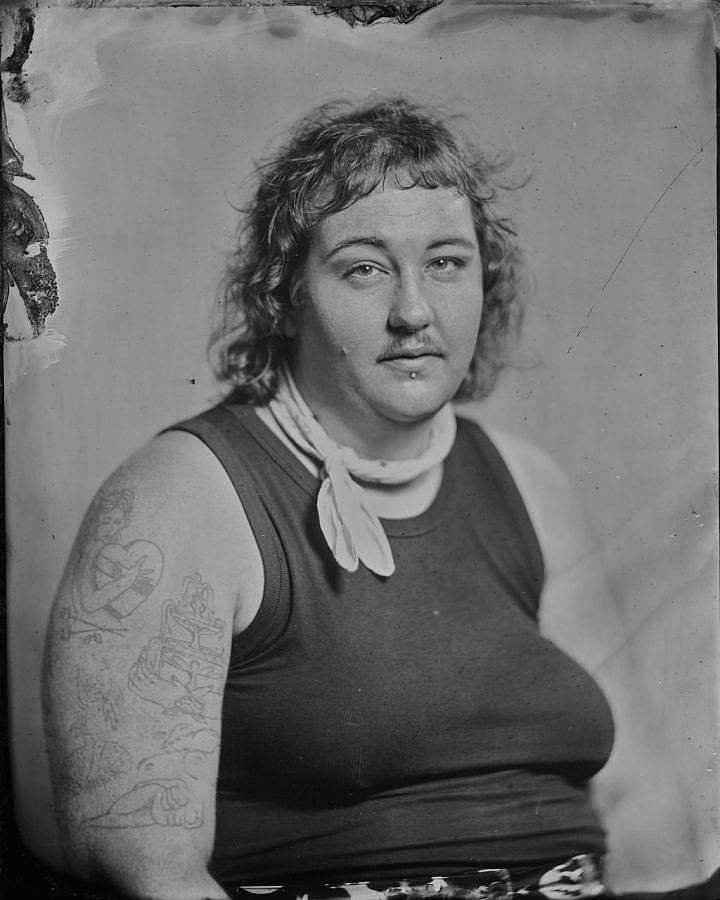Tell us a little bit about yourself and what you do.
I’m Kitty Rauth, a multidisciplinary artist based here in Chicago working in often too many directions- sculpture, performance, event-producing, writing, curating, and so on. Professionally, I’m the Artistic Director at Comfort Station, a role I began in March 2022, and started teaching a few undergrad classes in the last year. I also help organize a growing communal studio space with 14 other artists, and am lucky enough to be able to spend much of my work time there flip flopping between emails and studio work.
More importantly, I’m a Cancer stellium and therefore, deeply a caregiver to the people I love (and sometimes, ones I don’t). I’m the person at the party pressing strangers about their break ups or love affairs, and I relate to others most easily through conversations about relationships and connections. I love being with my friends and queer family- I have a low threshold for being by myself, and I’m often the one bringing the people together and making the plans to fruition that others have fantasized about.
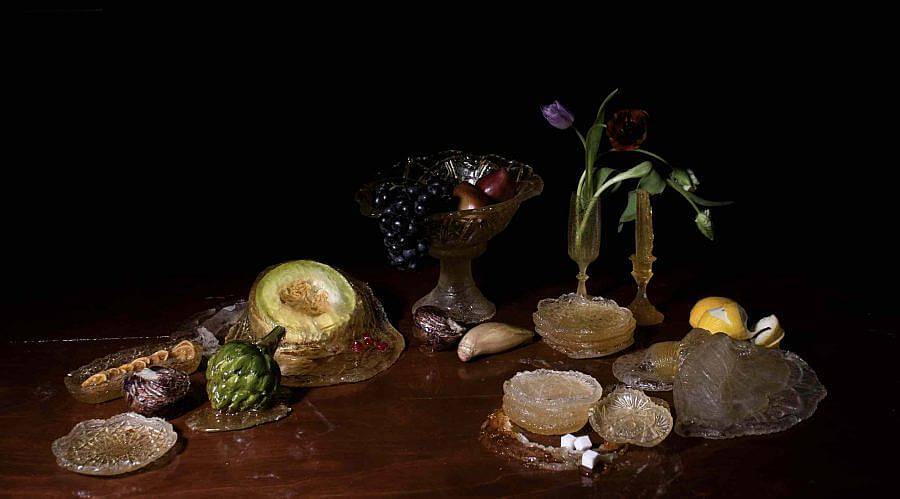
How would you describe your practice?
I often think about how my practice has two arms- my sculptural work and my organizing work. My sculpture, and more recently expanded media, has grown out of critiquing the East Coast WASP-adjacent systems in which I grew up. Physical making has become a way for me to work through posing my own questions about the complicated politics of excess & indulgence, the power dynamics of caring for others, and how bodies are situated at the intersections of class, race, and queerness. In my own personal histories, the place where all of these conversations converged was the contested ground of the dinner table, and therefore much of my work uses the visual language of formal dining and of failure.
In response to these critiques, and out of a need to find new paths, I’ve begun using my penchant for hosting and administrative skills to collaborate with other artists and produce large-scale communal meals that break those conventions of the uptight sit-down dinners that I grew up with. Each meal asks my collaborator to draw from their own practices and personal histories and work with me to put together a considered menu and experience. I’ve recently realized that the project, called Round Table, is a response, or maybe resolution, to the murkiness I swim through in my making. With the help of my collaborators, I’m working on correcting and futuring.

What/who is influencing your work right now?
This changes often but in the last few months its been: the original Joy of Cooking illustrations (very lesbian), a wild podcast made by this radical Irish dude called The Blindboy with an episode about the colonial history of the Pumpkin Spice Latte, Laila Gohar’s 15 meter-long desserts, royal gardens, the history of extreme napkin folding,
But always: my grandmother, etiquette, Victorian and 17th c French aristocratic interior design, the histories of Waterford and Wedgwood, my own material-experiment failures, queer and trans possibilities
Could you talk a little bit about your involvement with Comfort Station and what that space means to you?
Back in March 2022, I was hired as the first Artistic Director at Comfort Station, a multidisciplinary art space in the center of Logan Square. Comfort is an organization grounded in publicness- our physical space was built as a warming center and public bathroom for public transportation at the turn of the 20th century and is still owned by the city, while we work with Logan Square Preservation Society as the stewards of the building. A big part of my job is organizing special programming on the public lawn, which is by far the piece of the work that has taught me the most. Publicness is an extremely special, and also extremely complicated, territory to navigate, and a lot of the last 2 years has been about working with artists to trust each other and grow together. Making new connections through that process has been really special and invaluable.
What I love most about Comfort is its flexibility- growing from its DIY roots, we operate in a kind of round-about NFP way. We take what we need from the classic non-profit structures in order to organize ourselves to an extent, but leave space to create our own systems based on nuanced needs. I’ve not seen another organization that functions like Comfort Station- one that allows people to come in and try things out without too many reins from the top, one that gives agency to artists outside of its regular operations- and I feel lucky to be helping shape the future of our capacity. It would be difficult for me to lead an organization whose structures were set in stone and inflexible “because that’s how it’s always been done”, and I love working with Jordan Martins and our team of staffers to make amazing programming happen.
I’d love to hear about your studio space. Could you describe it and how that space came to be?
With a long history of living and working collectively in Philadelphia, I moved to Chicago with a dream of finding a warehouse floor and throwing up some drywall for studio spaces to recreate the grad school set up- personal studios in an overall shared space. I know that I work better in a community where I’ll always run into someone to interrupt my work for a quick chat or bit of gossip, and knew that post-grad success was going to necessitate some serious resource pooling. Last October, I found the listing on CAC’s Spacefinder describing our current space and I kind of couldn’t believe how perfect it sounded- 5000 sqft with a full kitchen, bathroom and shower, woodshop and roof access. After sitting on it for a few weeks out of disbelief, I went to check it out and was shown a space full of the previous tenants’ belongings, looking like they had gotten abducted. Through posting online, we connected with the previous tenants and consequently years of DIY punk events organizing and living space (ie Mortville), a really incredible history of what the space has been and the labor of how it got to its current build out.
There are 15 of us in the studio now, each with our own studio space, and it runs kind-of communally. Over the last year, we’ve been slowly figuring out what the space is outside of individual studios, how we want to organize and operate amongst ourselves, and what we can offer to community outside of ourselves. Officially a full year after moving in, we’re just starting to grasp how we want the space to function, what it can provide outside of ourselves, and what our capacity is to run a space in a way that honors the neighborhood, community needs, and history. Kate Bowen recently told me that good work “happens slowly, not in fiscal years but in geologic time” and I’m really trying to take that into account with how we grow. It’s a slow process with hard considerations, hiccups and an incredible amount of work, but ultimately it feels like a really magical space with good ghosts and we’re trying to be thoughtful stewards.
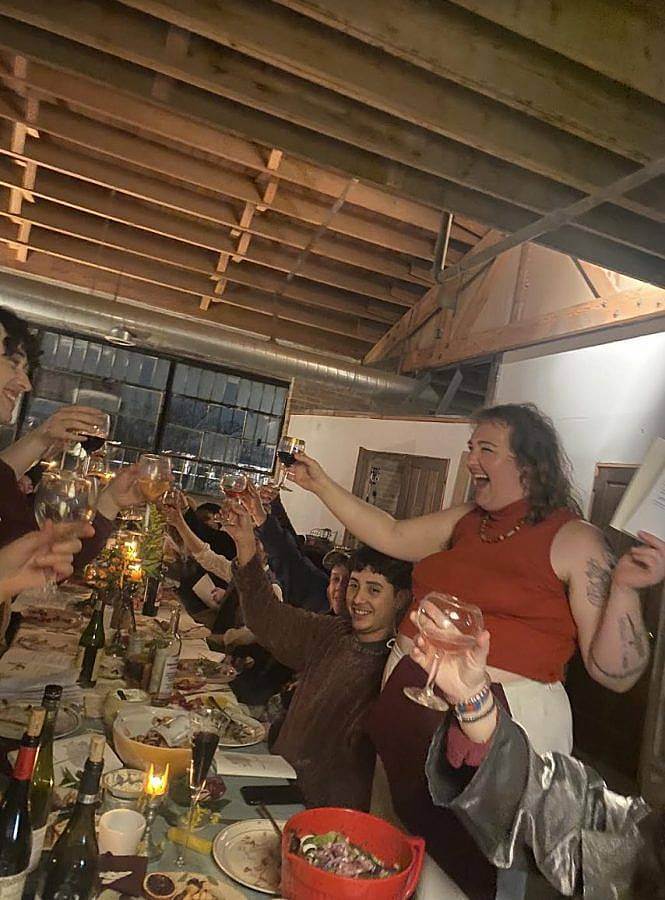
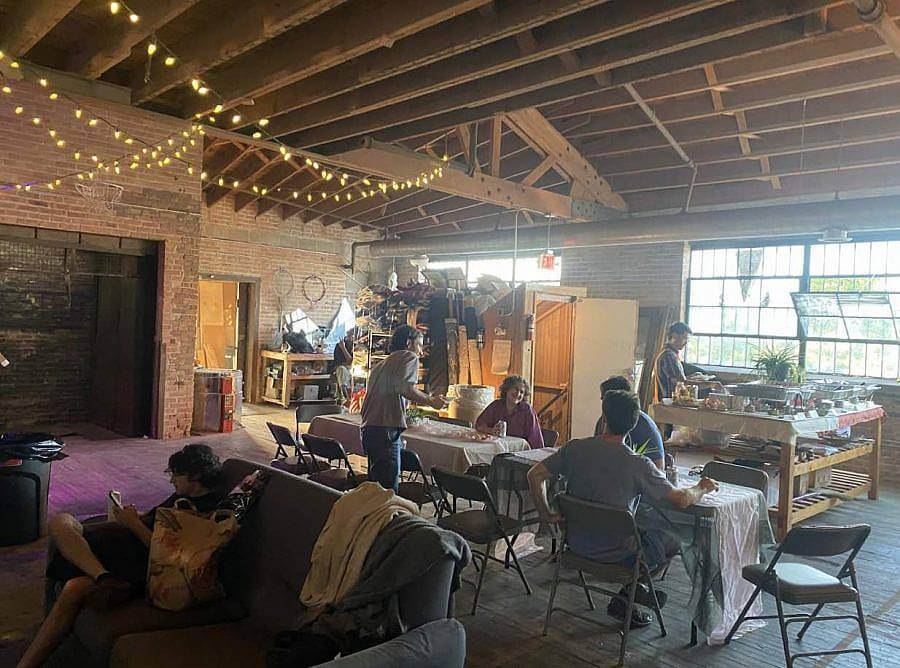
What are the main motifs in your work?
Cut crystal patterns show up a lot in the work, passed on from my grandmother’s love of the objects and personal collection. Thrift store cut crystal glassware litters my grandparent’s kitchen island, stocked with fruit past its prime, a result of my grandfather’s neurotic daily trips to Shop Rite where he purchases more fresh food than the two of them could ever eat. It wasn’t until after I started taking molds off the glassware that I realized the connection- one of those scary subconscious realizations.
Queen Anne furniture, mostly collapsed or broken tables, also make frequent appearances. Again, the style is preferred by my grandmother, who’s house is decorated with Victorian-inspired furniture, always dark wood, sometimes dressed with lace doilies or mauve linens.
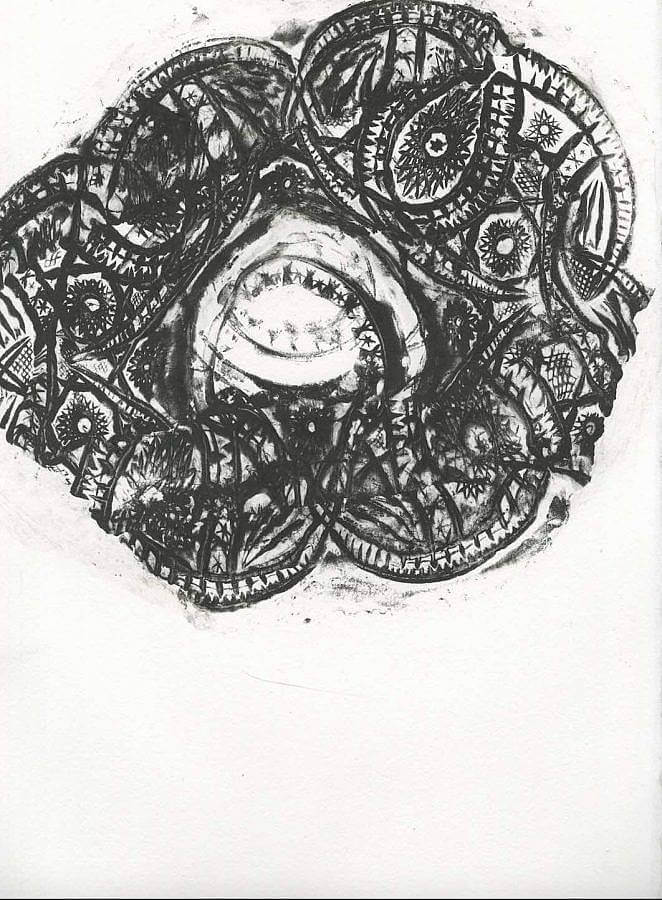

What is the importance of the material of sugar in your work?
Sugar originally entered my work as a way to have conversations within fat liberationist politics, thinking about how different foods are moralized and demonized. Sugar became a path towards exploring healthism, and the ties between fatphobia and our psychologically ingrained fear of death. Early in my efforts to work through fat liberation, excess and indulgence were radical touchstones of accepting and uplifting fatness, and sugar plugs in here seamlessly as a symbolic material of that indulgence. It became pretty quickly complicated though as I moved away from the privileged idea that excess is an intrinsically radical act of fat liberation, and found myself up to my eyeballs in texts about the production of sugar in relation to colonization and the Columbian exchange, and its use in royal kitchens and eventual growing accessibility. Sugar is now a much more involved way to speak about my family histories, care, and racialized class expectations.
Candy making and sugar’s ability to act as a dupe for glassware, specifically cut crystal glassware, was an exciting turning point that connected all the threads of my thinking. Early experiments with casting the material “failed”, in that depending on the temperature I would cook the sugar to, the forms I was pouring could not keep their shape for more than a few days. I loved what was happening though- the stemware would wilt, the bowls would collapse and flatten- and I realized that failure was actually an important avenue through which to consider the systems that etiquette upholds.
As the trials continued, I started cutting fresh batches with previously cast sugar. Cast sugar that is reconstituted several times takes on increasingly darker shades of amber and finally an almost-black. The burnt sugar reflects crisp detail but is unstable outside of climate-controlled environments and slowly drips off the glazed and polished surface. The dark amber syrup melts away from the surface, taking your reflection with it, wielding the effect towards poetic understandings of consumption and control, care systems, and the slipperiness of self-knowledge and self-perception.
I’ve since expanded the use of the cast sugar stemware to actually be functional. In the champagne tower piece, Hostess, I invite the audience to drink out of the sugar champagne glasses. As you sip, the point where your lips touch the glass slowly melts away producing a razor sharp edge, and you don’t taste the sugar infusing in your drink until the sickeningly sweet final sip. It’s moments like this where I realize how much sugar still has to give, and even though it often complicates the process of showing my work in galleries, I have to keep letting it bring me new places.
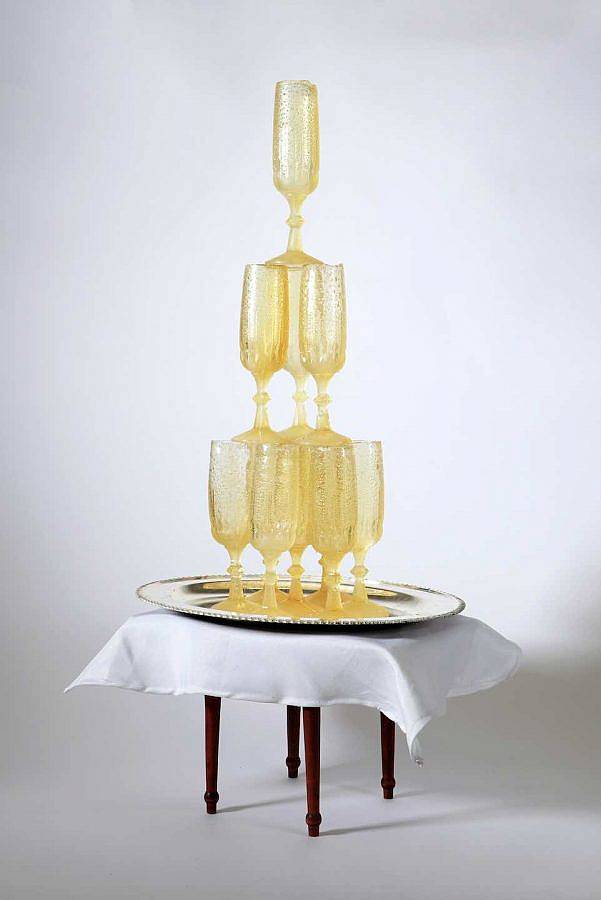
If you had not become an artist what do you think you would be doing?
I think I would probably find myself in an organizing role of some sort- wedding planning, event producing, whatever ways I could fold my hosting and admin skills together. I’m typically the one that my friends come to when they have an idea for some performance or event but need help actually getting it off the ground. If I didn’t have my own practice and jobs to juggle, I would love to be doing something like that full time. Supporting other peoples’ vision and helping it come to life is really fulfilling for me, and that’s really where my work at Comfort Station comes in.
How has teaching evolved your practice?/ What is your favorite part of teaching?
For me, teaching is another piece of futuring. I’m only in my second semester of teaching at a college level, but every time I walk into a classroom, I’m energized by my students and their work. I love being around Gen Z students that are simultaneously soaking up everything around them and giving it to me straight. In my professional practice classes, it’s important to me that we’re always engaging in “real talk” about the art world and how they can choose to navigate it, while also imagining a world by artists and for artists. What does that world look like and how can we build it? We know that the needs of artists are different than most other people, and I want to empower my students to create a world that works for them, but in the same breath, recognize how things exist now and learn how to break into or maybe instead, through it.
It’s my first year teaching freshman and I have to say, it’s really kicking my own ass into gear. Watching artists create with a fresh slate and try things out has helped me break down my own creative barriers and try something new- I’ve been doing all my own assignments this semester and it’s brought me out of a rut in my own making. I recently started a new body of work that came out of my co-teacher JO Belknap and my collage assignments and it’s set me on a new path that I don’t think I would have found otherwise. Teaching is really a reciprocal relationship, and I’m not sure most students recognize how much they give back to their faculty.
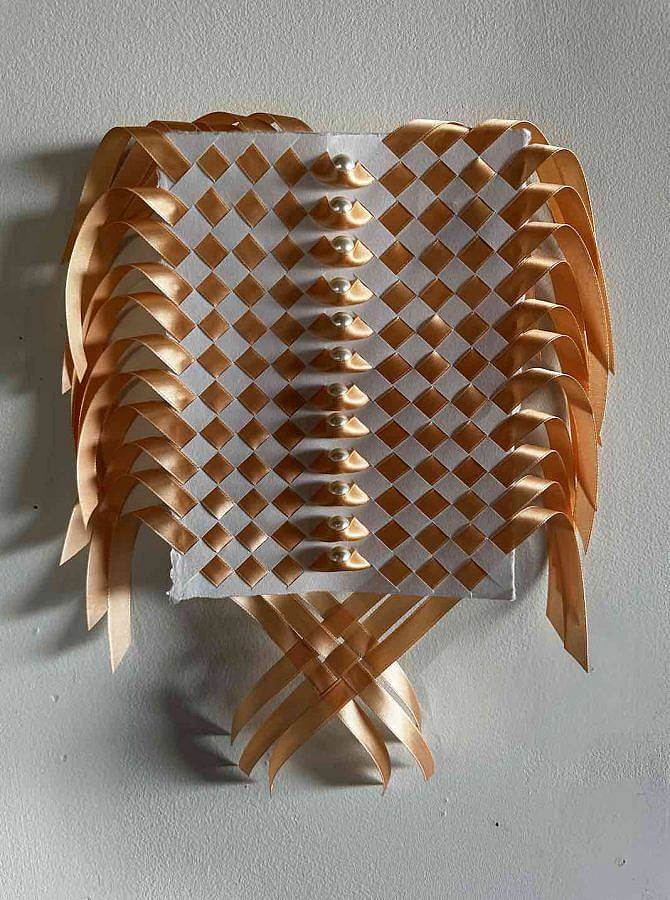
What is something you’re excited about right now?
A December packed full of Round Table dinners! I never thought I would be making Christmas art, but when you dabble in food, it kind of makes sense. Somehow, I finding myself hosting three separate dinners in one month! The first is with Maddie May, a good friend and incredible artist who was a professional pastry chef in another life before Chicago. Her practice revolves around her experiences growing up in a Midwestern blue collar family in the 90s and her own reflection on cycles of household turmoil that she experienced. Together, we decided that a dysfunctional family holiday party with a Midwestern-inspired high tea service at Color Club’s Tavern was the right way to fold together her studio practice and her history working in high end kitchens. Maddie often talks about how heavy their making feels, so it’s really exciting to watch them laugh about the chaotic menu choices we’re making in an effort to take a more light-hearted approach to encapsulating those experiences through a goofy dinner party.
Then, on Christmas Eve, I’m making my family a full Christmas dinner. For my entire life, my grandparents have hosted a large-scale Christmas Eve party where everyone they’ve ever met comes through, but with COVID and their age, it’s gone downhill over the past 5 years. Last year, I committed to taking over Christmas Eve dinner and to keep myself invested, I’m turning it into a Round Table meal for the people who are already right under the surface of the work.
And finally, I’m rounding off the month with an intimate dinner in Philadelphia with my queer family there. My best friend Elliott Rosenfeld is a farmer working on learning more about regenerative and sustainable farming techniques and is starting to plant winter seeds for cover crop. His mom, Victoria Lambert, is one of the most amazing women I ever met- an artist, a radical dietician, and an incredible farm-to-table cook. Victoria and I plan to take the winter harvest that Elliott is growing to craft a meal for a small group of close friends for the Winter Solstice, ending our year with healing- healing land, healing ourselves, healing each other. It should be very sweet, and I’m sure there will be tears but honestly that’s where I thrive.
What are some recent, upcoming or current projects you are working on?
I’m prepping for a few shows in the W/S 2024. In January, I’ll be down in Miami for a group exhibition aptly named The Dinner Party at Locust Projects curated by Yi Chin Hsieh where I’m restaging a larger, updated version of my champagne tower piece, Hostess, along with a few other works. Then in March, I’m installing a site specific solo show at my alma mater, Arcadia University, drawing on the history of the campus’ Gilded Age castle and its original owner, wealthy sugar baron William Welsh Harrison. I also just finished an essay I had been working on for a full year to be released in Critical Fat Phenomenology, a text that’s slated to be published next year. And finally, I’m excited about a new little series of weavings into paper! They don’t have a home yet but I’m having a lot of fun playing in the background of everything else.
Interview conducted and edited by Emma Kang James
